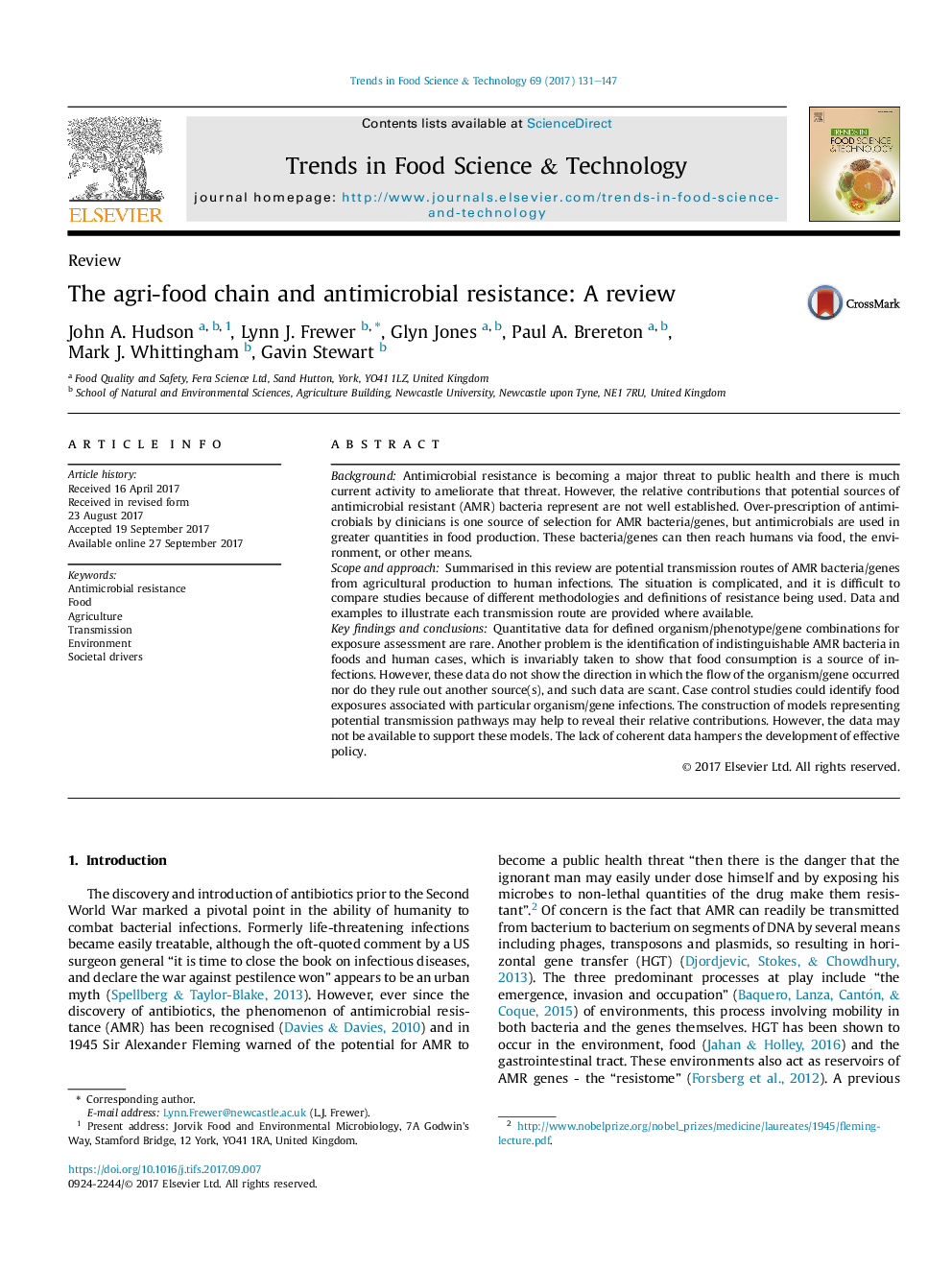| کد مقاله | کد نشریه | سال انتشار | مقاله انگلیسی | نسخه تمام متن |
|---|---|---|---|---|
| 5523692 | 1401384 | 2017 | 17 صفحه PDF | دانلود رایگان |
- Potential transmission routes of AMR bacteria/genes in agriculture to human infection reviewed.
- Case control studies could identify food exposures associated with organism/gene infections.
- Stakeholder behaviour (farmers, vets, consumers) may drive AMR.
- Construction of models for potential transmission pathways may reveal relative contributions.
- The lack of coherent data hampers the development of effective policy.
BackgroundAntimicrobial resistance is becoming a major threat to public health and there is much current activity to ameliorate that threat. However, the relative contributions that potential sources of antimicrobial resistant (AMR) bacteria represent are not well established. Over-prescription of antimicrobials by clinicians is one source of selection for AMR bacteria/genes, but antimicrobials are used in greater quantities in food production. These bacteria/genes can then reach humans via food, the environment, or other means.Scope and approachSummarised in this review are potential transmission routes of AMR bacteria/genes from agricultural production to human infections. The situation is complicated, and it is difficult to compare studies because of different methodologies and definitions of resistance being used. Data and examples to illustrate each transmission route are provided where available.Key findings and conclusionsQuantitative data for defined organism/phenotype/gene combinations for exposure assessment are rare. Another problem is the identification of indistinguishable AMR bacteria in foods and human cases, which is invariably taken to show that food consumption is a source of infections. However, these data do not show the direction in which the flow of the organism/gene occurred nor do they rule out another source(s), and such data are scant. Case control studies could identify food exposures associated with particular organism/gene infections. The construction of models representing potential transmission pathways may help to reveal their relative contributions. However, the data may not be available to support these models. The lack of coherent data hampers the development of effective policy.
Journal: Trends in Food Science & Technology - Volume 69, Part A, November 2017, Pages 131-147
